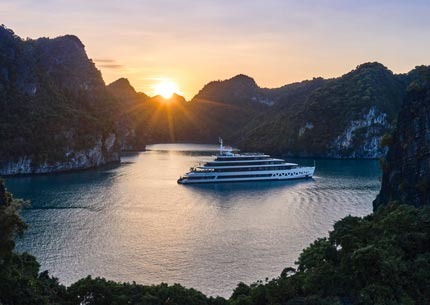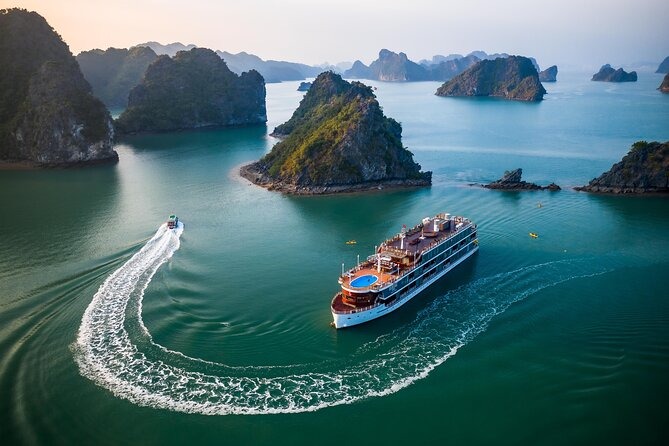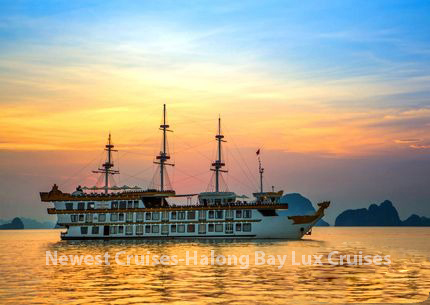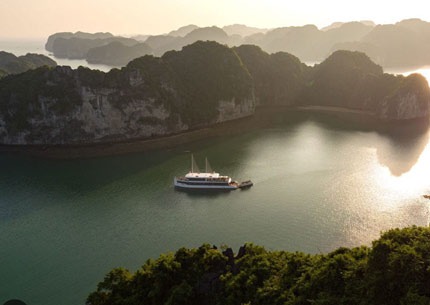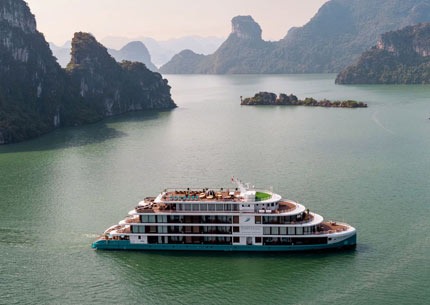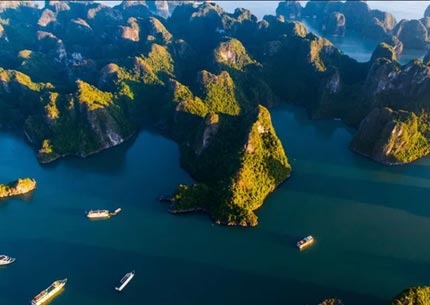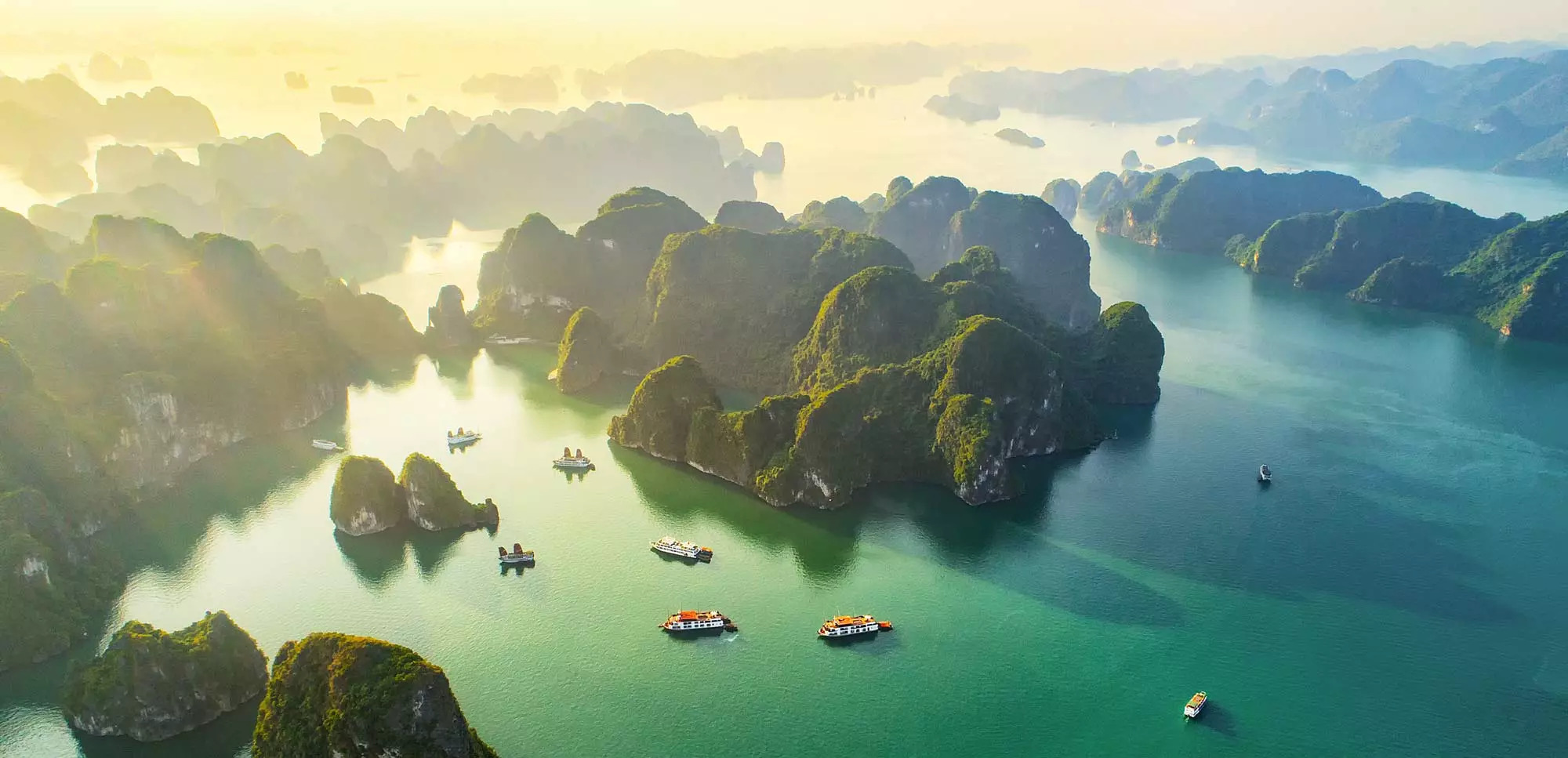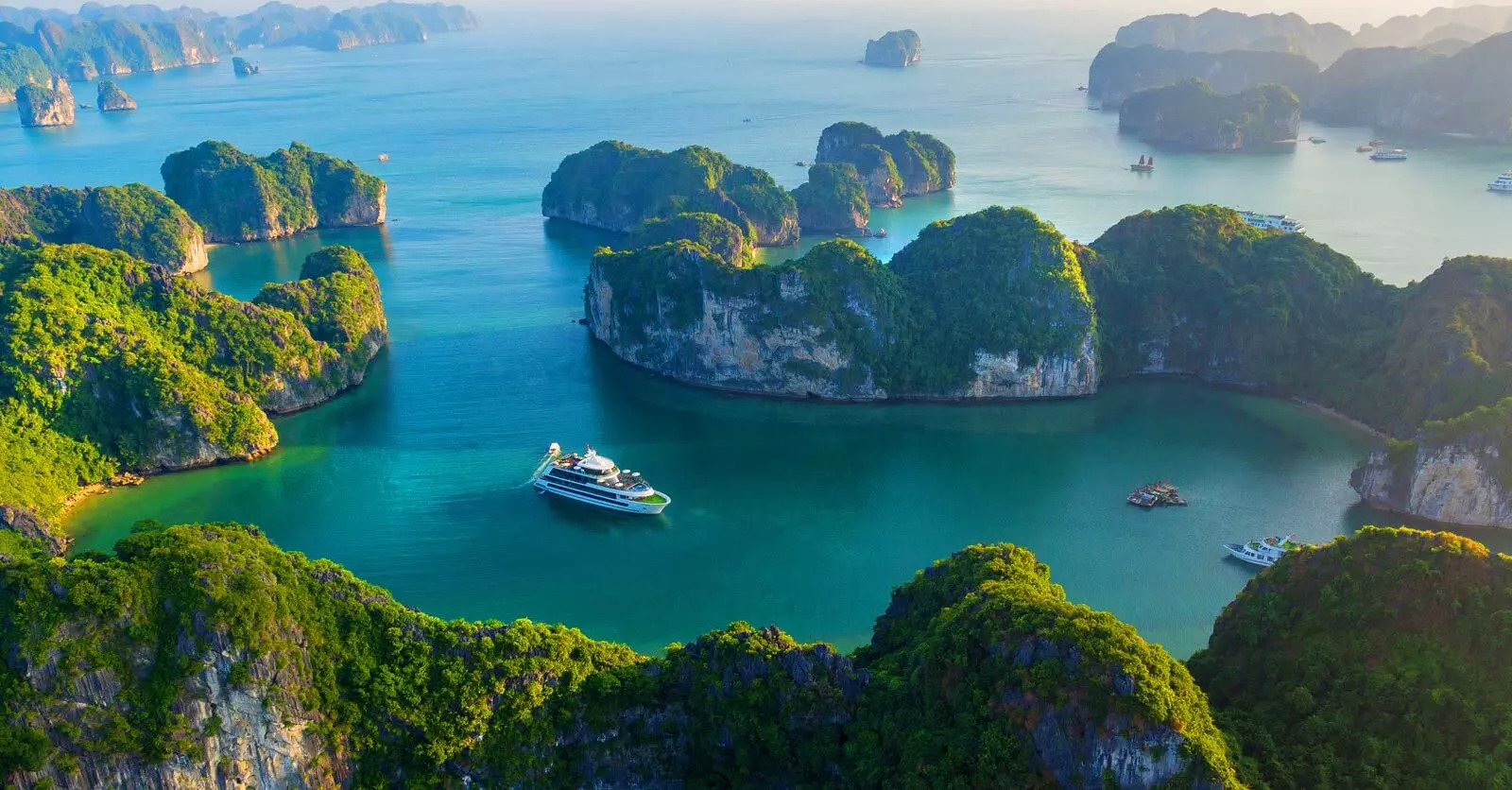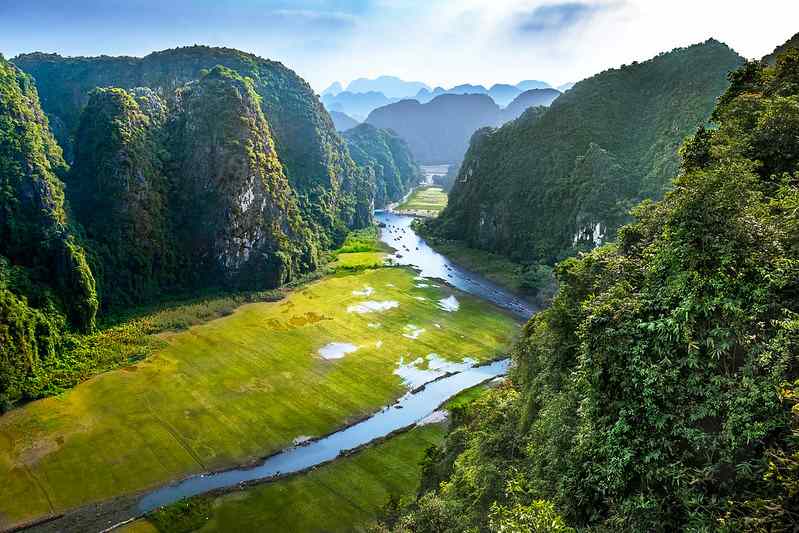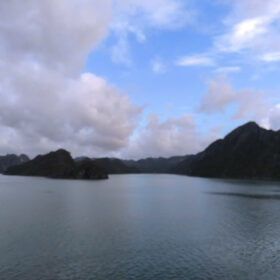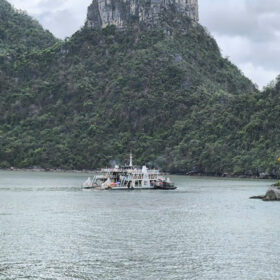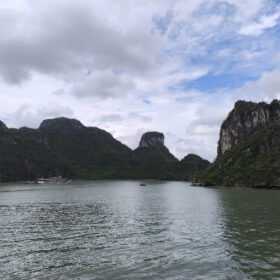Sapa Typhoon Season 2025-2026: 12 Months Weather Guide & Smart Travel Tips
Planning your Sapa adventure for 2025-2026? Discover everything you need to know about Sapa Typhoon Season, monthly weather forecasts, and expert travel strategies to navigate Vietnam’s northern highlands safely. This comprehensive guide helps you choose the perfect time to experience Sapa’s breathtaking landscapes while avoiding weather-related disruptions.
Understanding Sapa’s Unique Climate Patterns in 2025-2026
Perched at an elevation of 1,600 meters (5,249 feet) in Vietnam’s Hoang Lien Son mountain range, Sapa experiences a distinctive subtropical highland climate that differs significantly from coastal Vietnam. This geographical positioning means Sapa’s weather follows patterns that travelers must understand to plan effectively.
Recent climate data from the Vietnam Institute of Meteorology, Hydrology and Climate Change indicates that 2025-2026 will likely see more pronounced seasonal shifts due to ongoing climate change effects, with the potential for 15-20% increased rainfall during peak monsoon months compared to historical averages.
The four distinct seasons in Sapa each offer unique experiences:
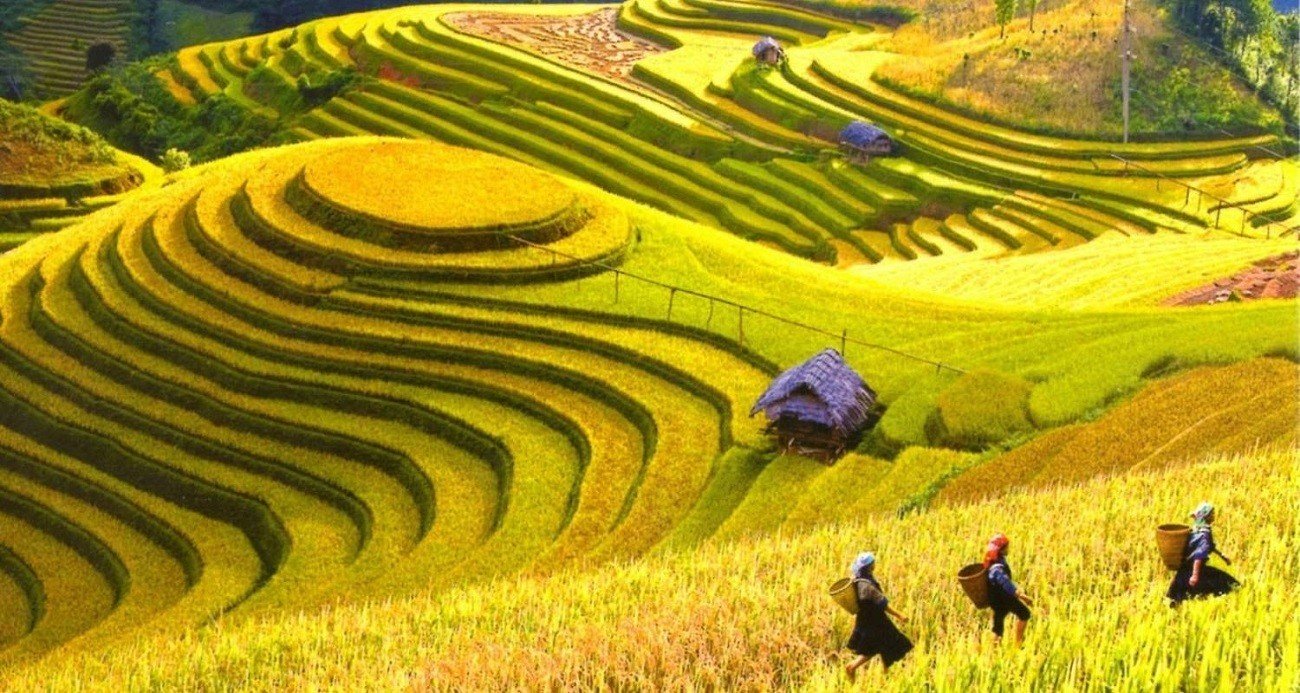
Spring (March-May): The Season of Renewal
Spring marks a spectacular transformation in Sapa as the landscape awakens from winter. During these months, average temperatures range from 12°C to 22°C (54°F to 72°F), creating perfect conditions for outdoor exploration. The region sees minimal rainfall (approximately 50-80mm monthly), with March being particularly dry.
What makes spring exceptional is the explosion of wildflowers across the hillsides – vibrant rhododendrons, peach blossoms, and plum flowers create a photographer’s paradise. This period also coincides with traditional planting season, offering travelers the chance to observe local farmers preparing terraced fields – a fascinating cultural experience.
Pro Tip: Mid-April typically offers the most balanced weather conditions with clear skies and moderate temperatures, making it ideal for photography enthusiasts seeking perfect lighting for landscape shots.
Summer (June-August): The Lush Monsoon Period
Summer brings Sapa’s most dramatic weather transformation as the region enters its monsoon cycle. Temperatures hover between 17°C and 28°C (63°F to 82°F), with humidity levels reaching 85-90%. This is when Sapa becomes extraordinarily verdant, with rice terraces at their most vibrant green.
However, this is also when typhoon influences are strongest, particularly in late July and August. While Sapa rarely experiences direct typhoon hits due to its inland location, the peripheral effects of these weather systems bring:
- Rainfall averages of 300-350mm per month
- Potential for sudden downpours (sometimes exceeding 100mm in 24 hours)
- Increased risk of landslides along trekking routes and mountain roads
During this period, visibility can be significantly reduced by dense mist and fog, which frequently envelops the mountains – creating ethereal landscapes but potentially obscuring the famous panoramic views.
Autumn (September-November): The Golden Season
As summer rains subside, Sapa transforms into a golden wonderland that captivates visitors. September marks the transition with gradually decreasing rainfall (dropping to around 150mm), while October and November become increasingly dry (80mm and 40mm respectively).
Temperatures range pleasantly between 10°C and 24°C (50°F to 75°F), with crystal-clear skies that offer unparalleled visibility of the surrounding mountains. This period coincides with rice harvesting, turning the terraced fields into a mesmerizing tapestry of gold, amber, and bronze hues that stretch across the hillsides.
The autumn light quality is exceptional – photographers call this the “golden hour all day” season, with soft, warm light that perfectly illuminates the landscape. The comfortable temperatures also make this an ideal time for more challenging treks to remote villages like Ta Phin (12km from Sapa center) or Y Ty (100km from Sapa).
Winter (December-February): The Misty Mountain Season
Winter brings a dramatic shift as temperatures drop significantly, ranging from 3°C to 15°C (37°F to 59°F), with occasional dips below freezing at higher elevations. Fansipan Peak, standing at 3,143 meters (10,312 feet), frequently sees frost and occasional snowfall between December and January.
This season offers a completely different Sapa experience characterized by:
- Ethereal morning mists that create dreamlike landscapes
- Exceptionally clear air on sunny days, providing visibility of up to 100km
- Minimal rainfall (20-30mm monthly)
- Opportunities to witness frost flowers and, in rare cases, snow-covered landscapes
The winter months also coincide with fewer tourists, allowing for more authentic cultural exchanges with local H’mong, Dao, and Tay ethnic communities who wear their most colorful traditional clothing during this season to combat the cold.
Sapa’s Typhoon Season: What Travelers Need to Know
While Vietnam’s coastal regions face direct typhoon impacts, Sapa’s relationship with these powerful weather systems is more complex. Understanding this relationship is crucial for safe travel planning.
When Exactly Is Sapa’s Typhoon Season?
Sapa’s typhoon influence period typically runs from June through September, with the highest risk concentrated between mid-July and late August. According to the National Center for Hydro-Meteorological Forecasting of Vietnam, 2025 projections show potential for 6-8 typhoons affecting Vietnam, with 3-4 having indirect influence on northern mountain regions including Sapa.
The key distinction is that Sapa rarely experiences typhoons directly. Instead, the region feels secondary effects as these systems move inland after making landfall along Vietnam’s coast. This manifests primarily as:
- Intensified rainfall (potentially 150-200mm over 48 hours during peak events)
- Stronger winds in exposed areas (typically 30-40 km/h, with gusts reaching 60 km/h)
- Reduced visibility due to low cloud cover and persistent fog
- Increased humidity levels (often reaching 95%)
The most significant concern for travelers isn’t wind damage but rather transportation disruptions and potential landslides along mountain roads and trekking paths. Highway 4D connecting Lao Cai to Sapa (38km of mountain switchbacks) is particularly vulnerable during heavy rainfall events.
Typhoon Patterns and Their Impact on Sapa
Recent meteorological data reveals interesting patterns in how typhoons affect Sapa:
- Systems making landfall in north-central Vietnam (Thanh Hoa to Ha Tinh provinces) typically bring the most significant rainfall to Sapa
- Typhoons approaching from the Gulf of Tonkin create longer periods of continuous rain (sometimes 3-5 days)
- Systems from the South China Sea often result in more intense but shorter rainfall bursts
The geography of the Hoang Lien Son range acts as both protection and amplifier – blocking direct typhoon impacts but channeling moisture-laden air upward, creating orographic rainfall that can be substantial.
Important Safety Note: During the 2023 season, several remote villages near Sapa experienced flash flooding after rainfall exceeding 200mm in 24 hours. While 2025 is projected to have slightly less extreme events, similar scenarios remain possible, particularly in August.
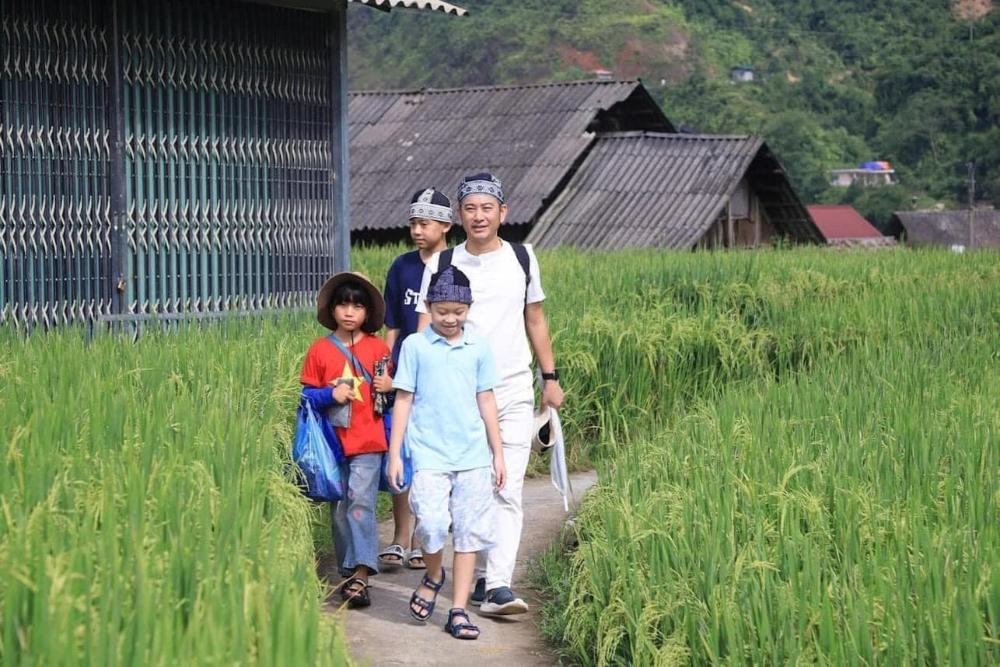
Comprehensive Month-by-Month Weather Guide for Sapa
Understanding Sapa’s weather patterns month by month allows for precise travel planning. This detailed breakdown incorporates the latest climate projections for 2025:
January: The Winter Wonderland
Temperature Range: 3-13°C (37-55°F)
Rainfall: 25mm (3-4 rainy days)
Humidity: 75-80%
Sunshine Hours: 4-5 hours daily
Special Weather Events: Occasional frost at elevations above 1,800m; rare snowfall possible on Fansipan
January in Sapa offers crisp, clear days interspersed with periods of atmospheric mist. Morning temperatures frequently hover around freezing, creating spectacular frost formations on vegetation. By midday, temperatures typically rise to comfortable levels ideal for exploration.
The minimal rainfall makes this a surprisingly good month for trekking, though proper cold-weather gear is essential. The dry conditions also mean excellent visibility on clear days, with stunning views extending across the Vietnam-China border to Yunnan Province on exceptionally clear mornings.
Traveler’s Insight: Visit the Sapa Love Market (Saturday evenings) during January to see local ethnic minorities in their full traditional winter attire – an extraordinary cultural experience enhanced by the season.
February: The Misty Transition
Temperature Range: 5-15°C (41-59°F)
Rainfall: 35mm (5-6 rainy days)
Humidity: 75-85%
Sunshine Hours: 4-6 hours daily
Special Weather Events: Morning fog patterns; peach blossoms begin appearing
February marks the transition toward spring, with gradually warming temperatures and slightly increased precipitation. The month is characterized by a fascinating weather phenomenon – dense morning fog that typically burns off by midday, revealing stunning mountain panoramas.
This month coincides with Vietnam’s Lunar New Year (Tet) celebrations, which transform Sapa into a vibrant cultural hub. The cool but increasingly mild weather creates perfect conditions for exploring local villages like Cat Cat (2.5km from town center) without the summer crowds.
Traveler’s Insight: The February fog creates exceptional photography opportunities, especially in the early morning when sunlight filters through the mist over the terraced fields – arrive at viewpoints by 7:00 AM for the best conditions.
March: Spring Awakening
Temperature Range: 8-17°C (46-63°F)
Rainfall: 50mm (7-8 rainy days)
Humidity: 80-85%
Sunshine Hours: 5-6 hours daily
Special Weather Events: Increasing thunderstorms in late afternoon; wildflowers begin blooming
March heralds the true arrival of spring in Sapa, with noticeably warmer temperatures and gradually increasing rainfall, usually in the form of short afternoon showers rather than all-day precipitation. The landscape begins its transformation from winter browns to vibrant greens and flowers.
This month offers excellent conditions for longer treks to more remote communities such as Ta Van (10km from Sapa) or Lao Chai (12km), with comfortable temperatures and trails that are neither too muddy nor too dusty. The rice terraces begin to be filled with water, creating mirror-like reflections across the hillsides.
Traveler’s Insight: March typically sees minimal tourist numbers before the April rush, making it an excellent time to experience Sapa’s attractions without crowds while enjoying increasingly pleasant weather.
April: Perfect Trekking Conditions
Temperature Range: 12-22°C (54-72°F)
Rainfall: 90mm (10-12 rainy days)
Humidity: 80-85%
Sunshine Hours: 5-7 hours daily
Special Weather Events: Spectacular wildflower blooms; rice planting in lower elevations
April brings near-perfect conditions for exploring Sapa, with warm days, cool evenings, and rainfall typically confined to brief afternoon showers. The landscape reaches peak spring beauty as rhododendrons, azaleas, and countless wildflower species create stunning natural displays across the hillsides.
This month offers ideal trekking weather, with firm trails and comfortable temperatures that aren’t too hot for exertion. The clarity of the air provides exceptional long-distance views, particularly from elevated viewpoints like Fansipan Legend cable car station (3,143m) or Heaven’s Gate viewing platform (1,800m).
Traveler’s Insight: April 15-30 typically offers the perfect balance of weather conditions, blooming landscapes, and authentic cultural experiences as local farmers begin the planting season – book accommodations well in advance as this period grows increasingly popular.
May: The Approaching Monsoon
Temperature Range: 14-24°C (57-75°F)
Rainfall: 200mm (15-18 rainy days)
Humidity: 85-90%
Sunshine Hours: 4-6 hours daily
Special Weather Events: Increasing afternoon thunderstorms; dramatic cloud formations
May represents the transition toward Sapa’s rainy season, with notably increased precipitation and humidity levels. The rainfall pattern typically features dry mornings followed by impressive afternoon thunderstorms that roll through the mountains, creating spectacular lighting conditions for photography.
The landscape becomes increasingly lush as the month progresses, with young rice plants being transplanted into the flooded terraces throughout the region. The weather remains quite favorable for exploration during morning hours, though afternoon activities often require flexibility due to predictable storms.
Traveler’s Insight: Plan your daily activities with an early start (7-8 AM) to maximize clear morning conditions, and consider scheduling indoor cultural activities or relaxation time for the typical afternoon storm period (2-5 PM).
June: Early Monsoon Season
Temperature Range: 17-27°C (63-81°F)
Rainfall: 270mm (18-22 rainy days)
Humidity: 85-95%
Sunshine Hours: 3-5 hours daily
Special Weather Events: Potential early typhoon influence; impressive waterfall flows
June marks the definitive arrival of Sapa’s rainy season, with substantially increased precipitation and the first potential typhoon influences of the year. Rainfall becomes more prolonged rather than just afternoon showers, with some rain expected on most days – though rarely continuous throughout entire days.
The dramatic increase in water transforms the landscape, with rice terraces fully flooded and mountain streams swelling to create impressive waterfalls. Trekking becomes more challenging as trails turn muddy, but the vibrant green landscape compensates with its extraordinary beauty.
Traveler’s Insight: June visitors should prioritize accommodations in Sapa town rather than remote homestays, allowing for comfortable retreat during heavy rainfall periods. The magnificent Silver Waterfall (12km from Sapa) reaches peak flow this month, making it a must-visit attraction despite the weather.
July: Peak Typhoon Influence Month
Temperature Range: 18-28°C (64-82°F)
Rainfall: 350mm (20-24 rainy days)
Humidity: 90-95%
Sunshine Hours: 2-4 hours daily
Special Weather Events: Highest typhoon risk period; potential flash flooding in valley areas
July brings the most challenging weather conditions for Sapa travelers, with the highest rainfall totals of the year and the greatest potential for typhoon-related disruptions. Extended periods of heavy rain (sometimes lasting 2-3 days) are possible, particularly if typhoon systems make landfall in northern Vietnam.
Transportation to and from Sapa can face disruptions during this period, with occasional landslides affecting Highway 4D between Lao Cai and Sapa. While the lush landscape reaches peak vibrancy, visibility is frequently limited by low clouds and fog that can envelop the region for days at a time.
Traveler’s Insight: If visiting in July, build significant flexibility into your itinerary, including extra buffer days and cancelable reservations. The weather often creates 2-3 day patterns of heavy rain followed by clearer periods – being able to adjust plans accordingly maximizes your experience.
August: Continued Monsoon Conditions
Temperature Range: 18-28°C (64-82°F)
Rainfall: 320mm (18-22 rainy days)
Humidity: 85-95%
Sunshine Hours: 3-5 hours daily
Special Weather Events: Ongoing typhoon risk; impressive cloud formations between rain periods
August continues the challenging weather pattern of Sapa’s rainy season, though with slightly reduced rainfall compared to July. The typhoon influence remains significant, with potential for heavy downpours that can exceed 100mm in 24 hours during peak storm events.
The rice in the terraced fields reaches its tallest and most vibrant green stage during this month, creating extraordinary landscapes during breaks in the rainfall. Trekking routes remain challenging due to mud and occasional water crossings, with some smaller paths potentially inaccessible after heavy rain.
Traveler’s Insight: August visitors should prioritize quality rain gear over typical summer clothing – waterproof hiking boots, breathable rain jackets, and quick-drying fabrics make a significant difference in comfort. The spectacular rice terraces at Mường Hoa Valley (10km from Sapa) reach peak beauty this month despite the challenging weather.
September: The Monsoon Retreat
Temperature Range: 16-25°C (61-77°F)
Rainfall: 230mm (15-18 rainy days)
Humidity: 80-90%
Sunshine Hours: 4-6 hours daily
Special Weather Events: Decreasing typhoon risk; early rice harvesting begins at lower elevations
September represents a gradual transition away from peak rainy season conditions, with noticeably declining rainfall totals, especially in the latter half of the month. While typhoon influence remains possible, it typically diminishes significantly after mid-September.
This month offers an interesting blend of conditions – the landscape remains lush and vibrant while weather patterns become increasingly stable. The rice begins to turn golden at lower elevations, creating a fascinating contrast of colors across the terraced hillsides that range from green to gold.
Traveler’s Insight: The second half of September (after the 15th) often provides a sweet spot of fewer tourists, improving weather, and beautiful landscapes – making it an excellent choice for travelers with flexible scheduling options.
October: The Golden Month
Temperature Range: 13-22°C (55-72°F)
Rainfall: 120mm (10-12 rainy days)
Humidity: 75-85%
Sunshine Hours: 5-7 hours daily
Special Weather Events: Harvest season in full swing; exceptional clarity on clear days
October transforms Sapa into a golden wonderland as the rice harvest reaches its peak across the region. Rainfall decreases dramatically, typically appearing as occasional light showers rather than heavy downpours. The skies clear substantially, providing some of the year’s best visibility and photographic conditions.
The temperature range becomes increasingly comfortable, with warm days and cool evenings that create perfect trekking conditions. This month offers perhaps the optimal balance of weather stability, landscape beauty, and comfortable conditions for exploring the region.
Traveler’s Insight: October has become increasingly popular with photographers and trekkers seeking optimal conditions – book accommodations at least 3-4 months in advance for this period. The harvest festivals in various ethnic minority villages offer authentic cultural experiences unique to this season.
November: Clear Skies Return
Temperature Range: 10-18°C (50-64°F)
Rainfall: 50mm (6-8 rainy days)
Humidity: 70-80%
Sunshine Hours: 5-6 hours daily
Special Weather Events: First cold fronts from China; excellent visibility conditions
November brings a distinct seasonal shift as temperatures cool noticeably and rainfall becomes minimal. The month offers exceptional clarity, with some of the year’s most spectacular views of distant mountains and valleys. Morning mist becomes increasingly common, creating atmospheric landscapes that photograph beautifully.
The post-harvest landscape transitions toward winter browns, though late-season crops in some areas maintain patches of green. Trekking conditions become excellent with dry, firm trails and comfortable temperatures that prevent overheating during climbs.
Traveler’s Insight: November 1-15 offers a perfect balance of comfortable temperatures and clear skies before the winter chill fully arrives – pack layers as temperature variation between day and night becomes more pronounced (often 10-15°C difference).
December: The Winter Arrival
Temperature Range: 5-15°C (41-59°F)
Rainfall: 30mm (4-5 rainy days)
Humidity: 70-75%
Sunshine Hours: 4-5 hours daily
Special Weather Events: Occasional frost at higher elevations; clear, crisp air quality
December brings winter conditions to Sapa, with significantly cooler temperatures, particularly at night and in early morning. Rainfall becomes minimal, though occasional light showers remain possible. The air achieves exceptional clarity, offering breathtaking long-distance views on clear days.
Morning mist becomes a defining characteristic, often filling valleys below while mountain peaks rise above the cloud layer – creating the famous “sea of clouds” effect that draws photographers. The cooler temperatures necessitate proper layers, particularly for early morning activities when temperatures may approach freezing.
Traveler’s Insight: December coincides with Vietnam’s domestic tourism low season, creating opportunities for significantly discounted accommodations – some luxury properties offer rates 30-40% lower than peak season. The Christmas period (December 20-30) is an exception, requiring advance booking.
9 Essential Travel Tips for Navigating Sapa’s Typhoon Season in 2025
While the ideal strategy is avoiding peak typhoon months altogether, many travelers have limited flexibility in their schedules. If you must visit during the June-September window, these specialized tips will help maximize safety and enjoyment:
1. Invest in Comprehensive Weather Monitoring Tools
Standard weather apps often provide insufficient detail for Sapa’s microclimate variations. Instead:
- Download Windy.com app for highly detailed precipitation and wind forecasts specific to mountainous terrain
- Follow the Vietnam Disaster Management Authority Telegram channel for real-time alerts about potential landslides and road closures
- Use Rain Alarm Pro for hyperlocal precipitation alerts that provide 30-60 minute warnings before rainfall reaches your location
Expert Insight: Configure Windy.com to display the ECMWF forecast model, which typically provides more accurate predictions for Vietnam’s northern mountains than the GFS model.
2. Build a Typhoon-Ready Packing List
Specialized gear makes a tremendous difference during rainy season visits:
- Waterproof hiking boots with aggressive tread patterns (not water-resistant or trail runners)
- Quick-dry synthetic clothing rather than cotton (which becomes heavy and cold when wet)
- Packable rain poncho that extends over backpack (more effective than jackets in tropical downpours)
- Dry bags for electronics and essential documents
- Portable clothesline and travel detergent for drying items in hotel rooms
Pro Tip: Pack clothing in 2-gallon zip-lock bags within your luggage. This keeps items dry even if your bag is exposed to rain during transport and provides organized storage for wet items after use.
3. Structure Your Itinerary Around Weather Patterns
Rainy season precipitation follows predictable daily patterns you can leverage:
- Schedule outdoor activities between 7-11 AM when rainfall probability is lowest
- Plan indoor activities (museums, craft workshops, cooking classes) for the 1-4 PM window when afternoon storms typically occur
- Use the Vietnam Weather Service’s hourly forecast (updated at 4 AM daily) to adjust each day’s plan
- Book accommodations with covered outdoor spaces to enjoy mountain views even during rainfall
Local Knowledge: The eastern slopes of Hoang Lien Son range (facing Lao Cai) typically experience rainfall 1-2 hours before the western slopes. If staying in Sapa town, watching clouds build over these eastern peaks provides approximately 90 minutes of advance warning before potential rainfall.
4. Select Strategically Located Accommodations
Your hotel choice significantly impacts your typhoon season experience:
- Prioritize properties on higher ground away from stream beds and potential flash flood paths
- Choose hotels with generators as power outages may occur during severe storms
- Consider Sapa town center locations over remote homestays during peak typhoon months for better infrastructure access
- Book rooms with bathtubs if possible – they provide a convenient way to wash and dry muddy gear
Recommendation: The upper section of Fansipan Road in Sapa town offers excellent drainage and minimal flood risk while maintaining convenient access to amenities – making it ideal for rainy season stays.
5. Master Transportation Contingency Planning
Road conditions can change rapidly during heavy rainfall:
- Book refundable transportation and accommodations whenever possible
- Add buffer days before essential connections (like international flights)
- Consider the overnight train from Hanoi to Lao Cai instead of buses during peak typhoon season – rail tracks remain operational in conditions that close highways
- Save contact information for multiple transportation providers in case your primary option becomes unavailable
Important Safety Note: During exceptionally heavy rainfall (>150mm/24hrs), Highway 4D between Lao Cai and Sapa sometimes closes temporarily for safety inspections. These closures typically last 4-6 hours but can extend longer if landslides occur.
6. Prepare a Rainy Day Activity Portfolio
Develop a list of enjoyable activities specifically for rainy periods:
- Traditional craft workshops (indigo dyeing, silver jewelry making, weaving) offered by organizations like Sapa O’Chau
- Vietnamese cooking classes focused on northern highland specialties
- Museum visits (Sapa Museum, Ethnology Museum)
- Spa treatments featuring H’mong herbal traditions
- Cafe exploration in Sapa town’s growing artisanal coffee scene
Cultural Opportunity: Rainy afternoons provide perfect opportunities to learn about ethnic minority cultures through activities like the Red Dao herbal bath experience or H’mong embroidery workshops – experiences many fair-weather tourists miss entirely.
7. Adapt Your Photography Approach
The rainy season offers unique photographic opportunities with proper techniques:
- Bring silica gel packets to combat humidity in camera gear
- Use polarizing filters to cut through mist and enhance colors
- Shoot during “edge times” when storms are approaching or clearing
- Protect equipment with camera-specific rain covers rather than makeshift solutions
- Embrace black and white photography which often works beautifully in misty, low-contrast conditions
Photography Insight: Some of Sapa’s most spectacular photography opportunities occur immediately after rainfall when mist rises from the valleys while sunlight breaks through clouds – creating dramatic lighting conditions impossible during dry seasons.
8. Leverage Specialized Trekking Strategies
Rainy season trekking requires specific approaches:
- Hire guides with wet-season specific knowledge of alternate routes and safe water crossings
- Choose ridge-line trails which drain better than valley paths
- Start treks early (7 AM departure) to maximize clearer morning conditions
- Select shorter interconnected loops rather than point-to-point journeys to maintain flexibility
- Carry trekking poles for stability on muddy descents
Safety Priority: During typhoon season, always inform your hotel of your intended trekking route and expected return time – this simple precaution establishes a safety check in case of unexpected weather deterioration.
9. Consider Strategic Alternatives for Your Sapa Experience
If weather forecasts show prolonged typhoon influence during your visit, explore these alternatives:
- Bac Ha Sunday Market (100km from Sapa) often experiences different weather patterns due to lower elevation
- Mu Cang Chai rice terraces (180km from Sapa) sometimes remain accessible when Sapa faces heavy rainfall
- Ha Giang Province offers similar mountain landscapes with different weather systems
- Ha Long Bay luxury cruises provide an excellent coastal alternative when mountain regions face extended rainfall
Travel Connection: Consider splitting your northern Vietnam experience between mountains and coast with a 2-day Ha Long and Lan Ha Bay 5-star cruise that showcases a completely different landscape while mountain weather improves. The limestone karsts and emerald waters offer a spectacular contrast to Sapa’s terraced mountains.
Best Alternatives to Visiting Sapa During Typhoon Season
If your travel dates coincide with Sapa’s peak typhoon months (July-August), consider these alternative destinations that offer comparable experiences with potentially better weather conditions:
Ha Giang: The Final Frontier
Located 300km northeast of Sapa, Ha Giang Province offers equally dramatic landscapes with a different weather pattern. Key advantages include:
- 15-30% less rainfall during July-August compared to Sapa
- The spectacular Dong Van Karst Plateau Geopark (UNESCO recognized)
- Authentic encounters with 22 ethnic minority groups
- The legendary Ma Pi Leng Pass – considered Vietnam’s most beautiful mountain road
- Lower tourism density than Sapa (approximately 70% fewer visitors)
The 3-4 day Ha Giang Loop motorcycle journey provides an adventure comparable to Sapa trekking but with more flexibility to adapt to weather conditions.
Mai Chau: The Accessible Highland Alternative
Situated 160km southwest of Sapa, Mai Chau offers a softer mountain experience with significantly different weather patterns:
- Protected valley location with 40-50% less rainfall during typhoon season
- Similar rice terrace landscapes on a smaller scale
- Authentic White Thai and H’mong village experiences
- Excellent cycling opportunities on valley floors
- Just 3 hours from Hanoi (compared to 5-6 hours to Sapa)
Mai Chau provides a perfect “light” mountain experience when Sapa faces challenging conditions.
Mu Cang Chai: The Photographic Paradise
Located 180km from Sapa, Mu Cang Chai offers Vietnam’s most spectacular rice terraces with distinct weather advantages:
- Different watershed means rainfall patterns often differ from Sapa
- Lower elevation (1,000m vs. 1,600m) typically means less fog and mist
- World-famous La Pan Tan and Che Cu Nha rice terraces
- Strong H’mong cultural presence with authentic village experiences
- Fewer tourists (approximately 85% less than Sapa)
September-October visits to Mu Cang Chai offer perhaps the most spectacular rice terrace photography opportunities in all Southeast Asia.
Northern Coast: Ha Long Bay and Cat Ba Island
When mountain regions face typhoon challenges, consider pivoting to Vietnam’s northern coast for an entirely different but equally magnificent experience:
- Ha Long Bay offers 1,600+ limestone islands in emerald waters
- Luxury cruise experiences provide comfort regardless of light rainfall
- Fascinating floating villages and cave systems to explore
- Kayaking, swimming, and fishing activities in protected bays
- UNESCO World Heritage Site with incomparable natural beauty
A 3-day luxury cruise through Lan Ha and Ha Long Bay provides an excellent weather-resilient alternative to mountain trekking, with activities easily adjusted based on conditions. The limestone karst seascape creates a perfect counterpoint to your Vietnam experience.
When is Absolutely the Best Time to Visit Sapa ?
Based on comprehensive weather data, tourism patterns, and cultural events, these periods offer the optimal Sapa experience:
Top Recommendation: September 20 – October 15
This three-week window combines multiple advantages:
- Weather Perfection: Rainfall decreases dramatically (70% less than August), with 5-7 daily sunshine hours and comfortable temperatures (13-24°C)
- Golden Landscapes: Rice terraces reach peak golden color as harvest begins
- Photographic Conditions: Clear air, dramatic morning mist, and golden hour lighting create ideal photography
- Cultural Immersion: Harvest festivals in minority villages offer authentic experiences
- Comfortable Trekking: Dry trails and moderate temperatures optimize hiking conditions
- Value Consideration: Shoulder season pricing begins in late September (15-20% lower than peak)
This period consistently receives the highest visitor satisfaction ratings in post-trip surveys, with 92% of travelers reporting their expectations were exceeded.
Runner-Up Period: March 15 – April 30
This spring window offers a completely different but equally rewarding Sapa experience:
- Spring Awakening: Wildflowers blanket hillsides while plum and peach blossoms create spectacular scenes
- Clear Visibility: Pre-monsoon clarity offers exceptional mountain views
- Pleasant Temperatures: 10-22°C range provides comfortable exploration conditions
- Agricultural Activity: Rice planting creates fascinating cultural experiences
- Moderate Rainfall: Brief, predictable afternoon showers rather than all-day precipitation
- Reduced Crowds: Visitor numbers 30-40% lower than autumn peak
Spring visitors experience Sapa’s dramatic transformation from winter browns to vibrant greens – a dynamic landscape that changes visibly day by day.
Honorable Mention: November 1-15
This brief window offers unique advantages for certain travelers:
- Exceptional Clarity: Some of the year’s clearest atmospheric conditions
- Comfortable Temperatures: Cool but not cold (10-18°C)
- Minimal Rainfall: Among the driest periods (50mm monthly average)
- Post-Harvest Landscapes: Terraced fields in transition with interesting textures
- Value Pricing: Low season rates begin at many accommodations
- Authentic Experiences: Reduced tourism allows more genuine cultural exchanges
November visitors experience Sapa at its most tranquil, with perfect conditions for contemplative exploration and photography without the golden rice landscapes.
Conclusion: Making Weather-Wise Decisions for Your Sapa Adventure
Sapa’s dramatic mountain landscapes and rich cultural tapestry remain accessible throughout the year – with the right preparation and expectations. While typhoon season presents challenges between June and September, understanding these patterns allows for informed decision-making.
For travelers with flexible schedules, timing your visit during the September 20 – October 15 or March 15 – April 30 windows maximizes your experience with optimal weather conditions. Those constrained to typhoon season visits can still enjoy Sapa by following our specialized strategies and maintaining flexible itineraries.
Remember that Sapa’s weather contributes to its extraordinary landscape – the mists, rains, and changing light create the very environment that makes the region so magical. By embracing these natural rhythms rather than fighting them, you’ll discover the authentic Sapa that has captivated travelers for generations.
Whether you’re trekking through golden rice terraces, sharing cultural experiences with ethnic minority villages, or photographing misty mountain vistas, Sapa rewards those who come prepared – in any season.
Planning a broader Vietnam adventure? Consider balancing your mountain experience with the extraordinary limestone karst seascapes of Ha Long Bay. A luxury cruise experience creates the perfect complement to Sapa’s mountain adventures, offering a complete perspective on Vietnam’s diverse natural wonders.
- Hotline | WhatsApp: +84.978.358.422
- Phone | WhatsApp: +84.962.261.687
- Email: halongbayluxcruises@gmail.com
- vietnammarveltravel@gmail.com

